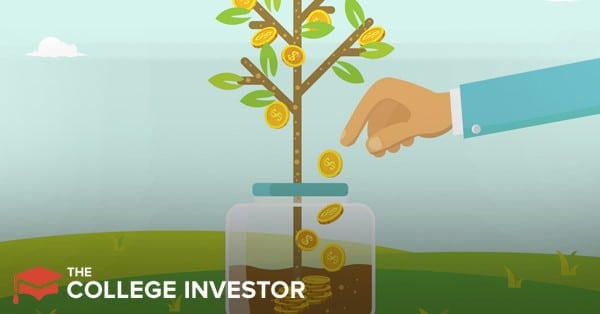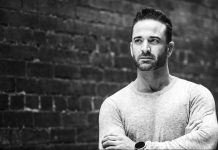Hey late starter! Are you looking to get started investing in your 30s? You’re not alone! I’m glad you’re here!
While you might be kicking yourself for not starting to invest sooner, you’re definitely not alone. In fact, according to a Gallup Poll, 28% of Americans don’t start investing until their 30s. That’s over 1 in 4 people.
The fact is, getting started investing in your 30s isn’t a bad thing. Yes, it would have been great to start earlier. But on the flip side, it’s better than starting later!
At 30, things in your life start to dramatically change, especially when looking back at your college years. As such, it means there is a different mindset when starting to invest in your 30s. We’re going to cover the main challenges facing investors starting in their 30s, as well as the key things to focus on for the future.
Be sure to check out the other articles in this series:
How Did We Get Here?
Here we are, in our 30s, and we’re just getting started investing. Honestly, it’s been a long path here for most – so congrats on making it. Too many people get bogged down in life that they don’t even start investing until it’s too late.
Luckily, getting started in your 30s still leaves you plenty of time to save for retirement and the future.
But how did we get here? For most, it was a combination of life events:
- You didn’t know what you wanted to do after high school and put off college
- You didn’t find a career after college and bounced around various low wage jobs
- You had unexpected life events that set you back and prevented you from earning more
- You had positive life events, such as a child, that prevented savings
Honestly, the list of reasons is infinite, but the story is the same: you simply never had the means to save and invest until now.
So, now that you’re ready to go, let’s get started!
Balancing Investing With Life Events In Your 30s
The tough part about getting started investing in your 30s is that your 30s is typically filled with major (and expensive) life events.
Some big events include marriage. The median age for men to get married is 29, and women is 27. That means a good portion of millennials are getting married in their 30s. And with the average cost of a wedding at $26,645, that’s a big expense to stomach.
Also, many people are waiting to have children as well. The average age at which women are having their first child continues to rise. According to the CDC, over 30% of women were in their 30s before having their first child – the highest it’s ever been. With the average delivery cost reaching $10,000, and the estimate that it costs over $245,000 to raise a child to age 18, it’s no wonder people are delaying these expenses until later.
Finally, all of these events are typically coming at a time when people are just starting to earn a little more money at work, and have gotten their student loan payments a bit more manageable.
So, how do you overcome these major life events while still investing for the future? The goal is financial balance. You can do both – save for the present and save for the future. But it requires a little more thought and effort.
In your 20s, you could basically stash as much money away as you could afford without giving any real thought to other priorities. However, in your 30s, you have to play the game of financial balance.
Understanding Your Goals & Being Real With Yourself
So, the real question becomes – how do you figure out your goals, and how can you be honest with yourself in achieving them?
For most people, you goals should be:
- Take care of your immediate needs for yourself first
- Ensure you’re taking care of your family
- Save for your future
- Plan for big events
Let’s start with taking care of your immediate needs first. This means ensuring that you have at least a 6 month emergency fund already saved. If you don’t, this needs to be your primary goal. Read about saving an emergency fund here: What You Need To Know About Emergency Funds
You also need to ensure that you’re financially organized. The only way you’re going to be successful in saving for your future is if you keep accurate records and know where all of your money is. If you don’t already have a good system in place, look at using a free tool like Empower to keep track of all your bank accounts.
Once you’ve taken care of yourself, it’s important to ensure that you’re taking care of your family. This is very important, because nothing you do to build wealth matters if you’re just going to leave them screwed if you die. When I’m talking about taking care of your family, you need to have the following completed:
- Will – This document tells people what happens to your kids if you die
- Trust – This document helps keep the money straight when you die
- Life Insurance – This can replace your income if you die so your family doesn’t become homeless
- Disability Insurance – Most people forget about this, but what happens if you get in a bad car accident and can’t work? Disability insurance can replace your income so your family can live.
Once you have these essential tools in order to protect your family, you can finally start looking at saving for your future.
For most people, the main goal of your 30s should be to contribute the maximum contributions allowed for both a 401k or 403b, and an IRA. If possible, see if you can save more than that. The trouble is, you do have a little bit of catch-up to do since you didn’t start in your 20s.
And finally, once you’ve taken care of the above items, you can look at balancing in life events. Only use the money left over after saving for retirement to plan for things like weddings and vacations. These “fun” things have a lot of flexibility when it comes to budget – but your future doesn’t.
Do You Need A Financial Advisor?
When you’re in your 20s, it doesn’t make a lot of sense to meet with a financial advisor. There simply isn’t enough they can do for you to make it worth it. However, in your 30s, it can make sense to meet with a financial planner to discuss creating a plan if you don’t feel comfortable doing it yourself.
We recommend using a fee-only financial planner to put together a financial plan for you. If you don’t know the difference in types of financial advisors, read this article: The Shocking Truth About Financial Advisors. The bottom line is you want to pay for a service, and not be concerned about any potential conflicts of interest.
We recommend talking to a financial planner around life events. The reason? The same financial plan should work during the same period of the life event. For example, if you create a financial plan as a newlywed, the same plan should work for you until you have children.
Here are some good life events to think about meeting a financial planner:
- Getting Married
- Changing Careers (with significant compensation changes)
- Having Children
- Paying For College
- Approaching Retirement
- In Retirement
An alternative to meeting with a financial advisor, if you just want to stick to investing, is to use a robo-advisor. These are online platforms that do all of the investing “stuff” for you, like setting up an asset allocation and rebalancing your portfolio.
While most robo-advisors can’t help you with a holistic financial plan, they are great tools for investing. If you want to go the robo-advisor route, we recommend checking out our list of the Best Robo-Advisors here >>
What Accounts Should You Be Investing In?
In your 30s, you should be placing a high focus on saving for retirement. As such, you should be following the proper order of operations for saving for retirement.
This order is all about what types of accounts to invest money in, in the best order, to take advantage of as many tax-deferrals as possible.
The best order to save for retirement is:
- Contribute to your 401k up to the company match
- Max out your IRA to the annual contribution limit
- Go back and max out your 401k to the annual contribution limit
- If you qualify for an Health Savings Account (HSA), contribute to the max and treat it like an IRA
- If you earn a side income, take advantage of a SEP IRA or Solo 401k
- Save any excess in a standard brokerage account
How Much Should You Invest?
So, how much do you need to be saving and investing in your 30s to achieve your goals? Well… it all depends on your goals.
The trouble with starting to invest in your 30s is that it will always take more money to achieve the same goal than in your 20s. Remember, if your goal was to have $1 million at at 62, you’d need to save $3,600 per year starting at age 22.
In you 30s, assuming an 8% annual average return, you’re going to need to save and invest the following amounts each year to have $1 million at age 62:
Just look at what a difference a decade makes! If you just start investing $6,900 per month at age 30, you can achieve the same goal it takes you $15,300 at age 39!
This is just a guideline. I recommend that you save until it hurts – and for most, that means saving well above and beyond just $1 million. In fact, for many people, having a $1 million retirement portfolio probably won’t be enough to live at the same standard they are today. So you might even want to consider raising your goal.
The bottom line here is that you need to save and invest as much as you possibly can. If you’re not achieving this goal right now, figure out a way to get there quickly.
Investment Allocations In Your 30s
What you invest in is all about your personal goals and risk tolerance. In your 30s, the biggest way you’re going to build wealth is still through saving. While you want your portfolio to earn you a “good” return, you need to select a portfolio allocation that matches the risk you’re willing to have as well.
That’s why we believe that you should maintain a diversified portfolio of low cost ETFs. This is the same strategy that a robo-advisor would do for you automatically.
We really like the Boglehead’s Lazy Portfolios, and here are our three favorites depending on what you’re looking for. And while we give some examples of ETFs that may work in the fund, look at what commission free ETFs you might have access to that offer similar investments at low cost.
Conservative Long Term Investor
If you’re a conservative long-term investor, who doesn’t want to deal with much in your investment life, check out this simple 2 ETF portfolio.
Moderate Long Term Investor
If you are okay with more fluctuations in exchange for potentially more growth, here is a portfolio that incorporates more risk with international exposure and real estate.
Aggressive Long Term Investor
If you’re okay with more risk (i.e. potentially losing more money), but want higher returns, here’s an easy to maintain portfolio that could work for you.
Don’t Forget To Rebalance Your Portfolio
As you invest your portfolio, remember that prices will always be changing. You don’t have to be perfect on these percentages – aim for within 5% of each one. However, you do need to make sure that you’re monitoring these investments and rebalancing them at least once a year.
Rebalancing is when you get your allocations back on track. Let’s say international stocks skyrocket. That’s great, but you could be well above the percentage you’d want to hold. In that case, you sell a little, and buy other ETFs to balance it out and get your percentages back on track.
And your allocation can be fluid. What you create now in your 20s might not be the same portfolio you’d want in your 30s or later. However, once you create a plan, you should stick with it for a few years.
Here’s a good article to help you plan out how to rebalance your asset allocation every year.
Final Thoughts
Getting started investing in your 30s is harder than getting started in your 20s. There’s more of “life” to deal with, you have to save more money to achieve the same goals, and honestly you’re continuing to battle uphill in work, income, and more.
However, it’s essential that you start. Don’t kick yourself because you didn’t start 10 years earlier – realize that today is better than in 10 more years. One of my favorite quotes is:
https://blog.5gigbucks.com/create-your-very-own-auto-publish-news-blog-site-and-earn-passive-income-in-just-4-easy-steps/







